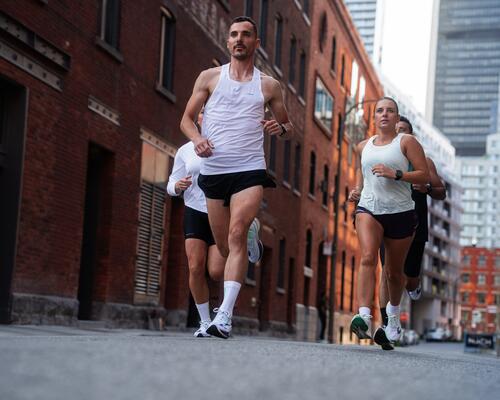How long does it take to run 10km? What is a good average time?
A "good running time" is above all a time that will challenge you without pushing you over the limit. Every runner is different. This time will therefore depend on several factors such as your initial level of ability and your availability to train.
To get an idea of your running potential and the time it will take you to complete 10km, you will have to calculate your MAS (maximum aerobic speed). You can use this calculation to work out your running pace for the day of the race, choose the right target time for you and orient yourself towards a suitable training plan.
Here are the times that you could aim for according to your MAS:
● MAS of 13 km/h: between 56' and 51'20 for a 10K
● MAS of 15 km/h: between 48'30 and 44'30 for a 10K
● MAS of 18 km/h: between 40'30 and 37' for a 10K
💡 NB: remember to listen to your body.The objective is above all to prevent injuries and have a good time during the challenge.






